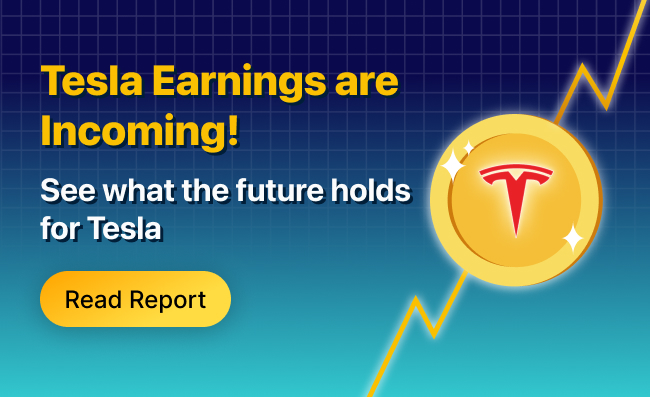- Market focused on long-term Tesla story amid competition and tighter margins.
- Positive surprises in revenue, partnerships, and regulatory credits could offset shrinking margins in H1.
- Tesla's record production in Q2 raises questions about sales sustainability and potential risks.
When analyzing Tesla’s (NASDAQ:TSLA) Q2 earnings tomorrow, the market won’t be particularly focused on the short-term implications of declining revenue growth and higher cost of revenues in the EV giant’s balance sheet.
Instead, analysts will be keener to assess whether the long-term Tesla story remains on track in the face of increasing competition and tighter margins.
This means that, as in Q1, a negative EPS surprise can be easily offset by the message that, despite the still challenging 2023, a bright 2024 is on the horizon. In fact, Tesla is expected to experience a 13% decrease in earnings during fiscal 2023, but there is optimism for a strong recovery with a projected 33% surge in FY24, resulting in earnings of $4.70 per share. Furthermore, the company’s total sales are anticipated to exhibit remarkable growth, with a projected 23% increase this year and an additional 25% climb in FY24, reaching an estimated $125.81 billion.
Moreover, there is an expectation that the Austin-based giant will show it has been able to keep improving its revenue mixture in H2, signaling greater resilience against a potentially slowing global consumer economy in H2. 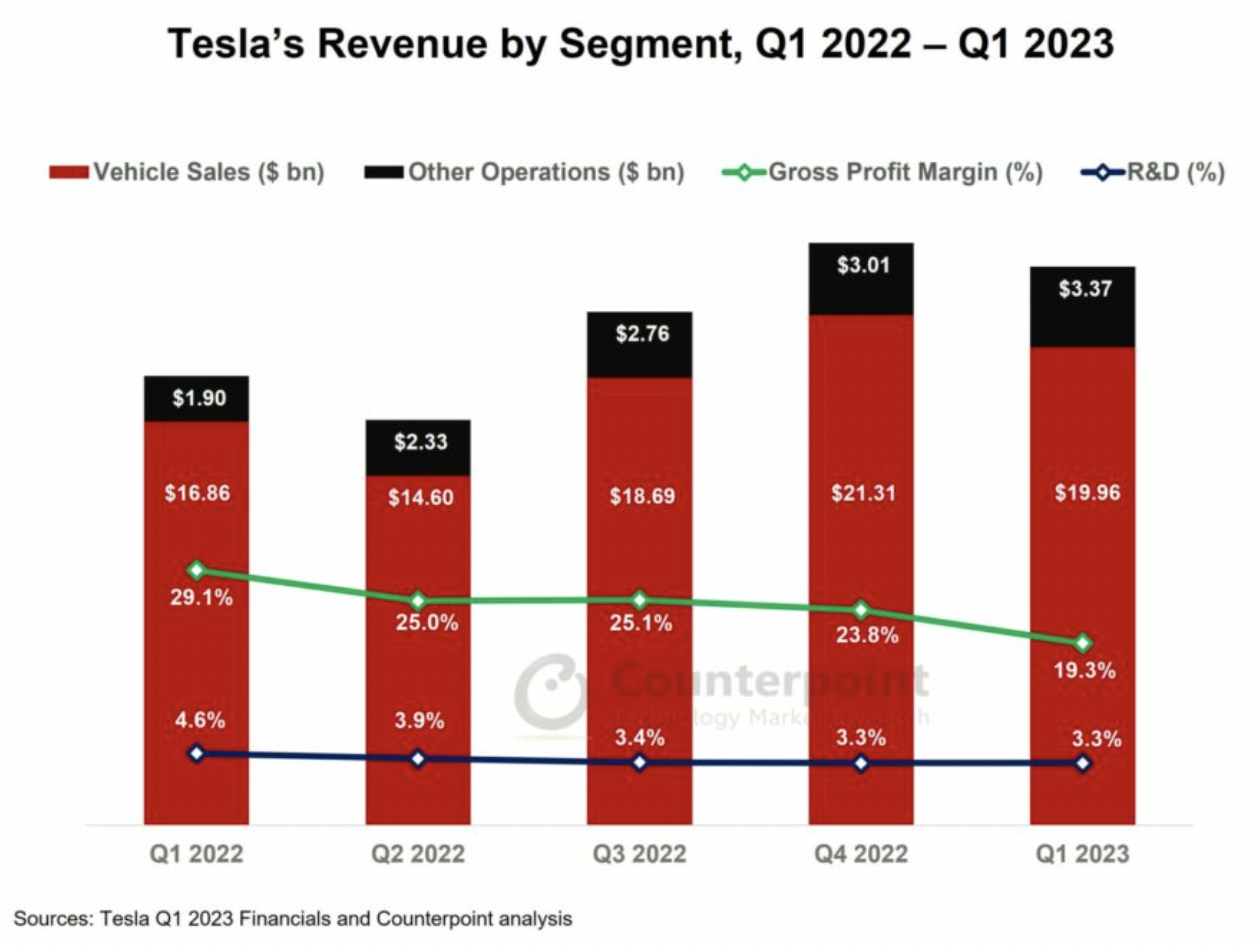
Source: Counterpoint Analysis, Tesla
In that sense, positive surprise in revenue from car sales, positive developments on the partnership side—especially regarding the adoption of Tesla’s North American Charging Standard, and a slowing decrease in revenue incoming from regulatory credits could shadow the fact that margins will likely keep shrinking in 2023.
On top of that, Tesla shielded itself from a deeper selloff with the news on Monday that it had built the first Cybertruck at its Austin Giga Plant. Investors will be keen to discover Elon Musk’s production plans and estimates for the futuristic-looking SUV on the post-earnings call.
This backdrop, on top of a conservative 0.82 EPS estimate, spells caution for Tesla bears going into tomorrow’s report. However, with the potential for a surprise skewed to the upside and with margins gradually shrinking, I find it unlikely that we will see any major moves on the report.
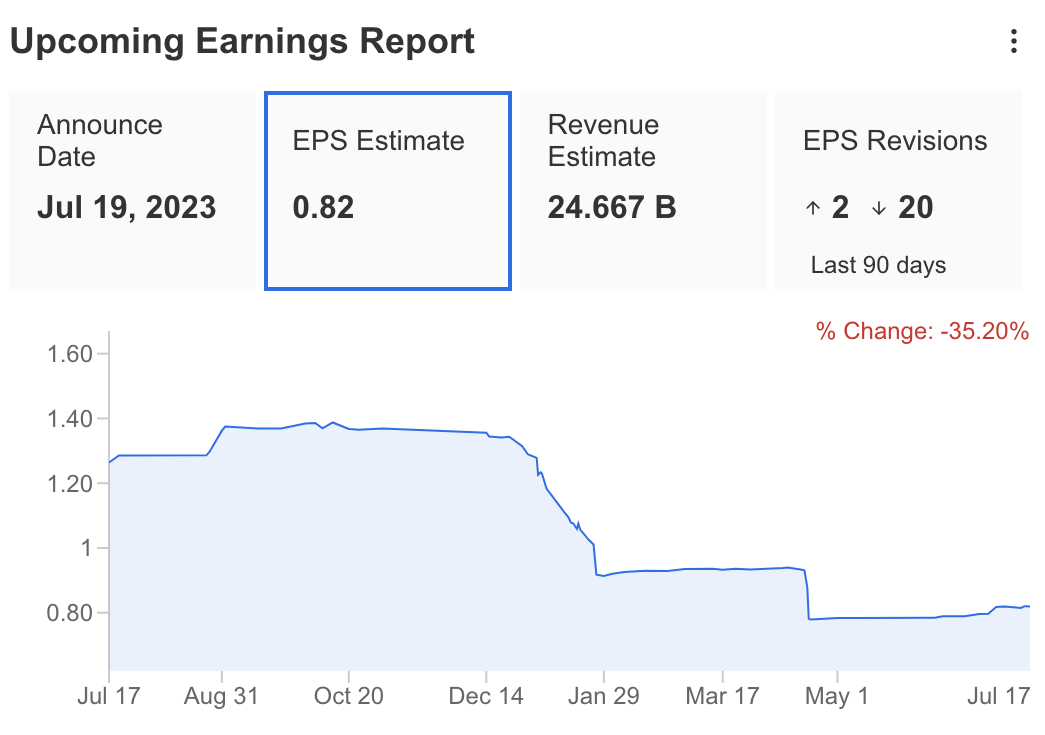
Source: InvestingPro
Still, with the market pricing in a brighter 2024 on the back of improving financial conditions, betting against Tesla at this point — while correct from a fundamental perspective — may prove a costly game.
But if it’s not a good time to short the stock despite its 78X multiple, is it a good time to buy it? To answer that question, let’s take a deeper look at the company’s fundamentals with InvestingPro.
Can Tesla’s Car Sales Keep Up With Record Production?
In the second quarter, Tesla manufactured a total of 479,700 vehicles, a record for the EV giant. Moreover, the company achieved significant progress in terms of deliveries, with a total of 466,140 units delivered in Q2. This figure represents an impressive 83% increase compared to the same period last year, as well as a 10% growth when compared to the previous quarter.
However, those numbers came on the back of shrinking margins, as the Elon Musk-led company had to simultaneously cut prices and increase production costs. Now, the projected gross margin for Tesla in Q2 is expected to decrease to 17.5% QoQ — and that’s after another 10% decline in Q1.
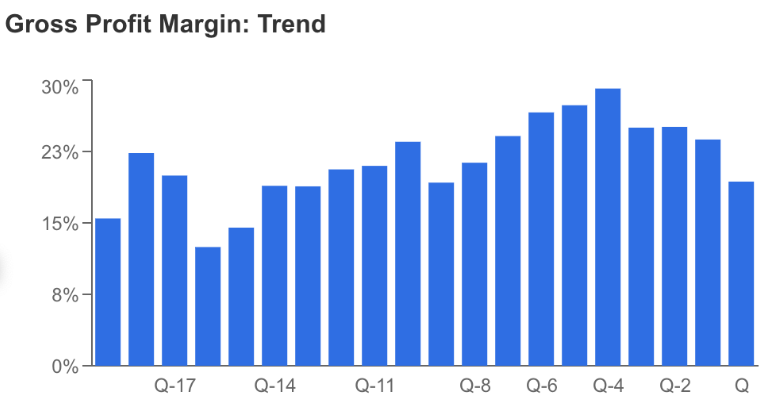
Source: InvestingPro
Despite that, analysts anticipate that Tesla’s Q2 revenues could surpass the consensus figure of $24.68 billion.
Moreover, the Cybertruck, which is anticipated to enter production in September, could bring in around $7-8 billion in annual revenues if it achieves a 10% market share in the U.S. pickup truck market.
The Semi Trucks alone could contribute around $12.5 billion in annual revenues, given the goal of producing at least 50,000 units annually.
Despite these solid growth projections, however, risks such as a potential slowdown in demand, increased competition, and regulatory issues should not be overlooked.
Moreover, production of the Model 2 remains delayed. Any developments in that area could be another potential catalyst for growth.
Fundamentals
Tesla’s Q1 2023 results show a total revenue of $23.3 billion, representing a 24% increase year over year.
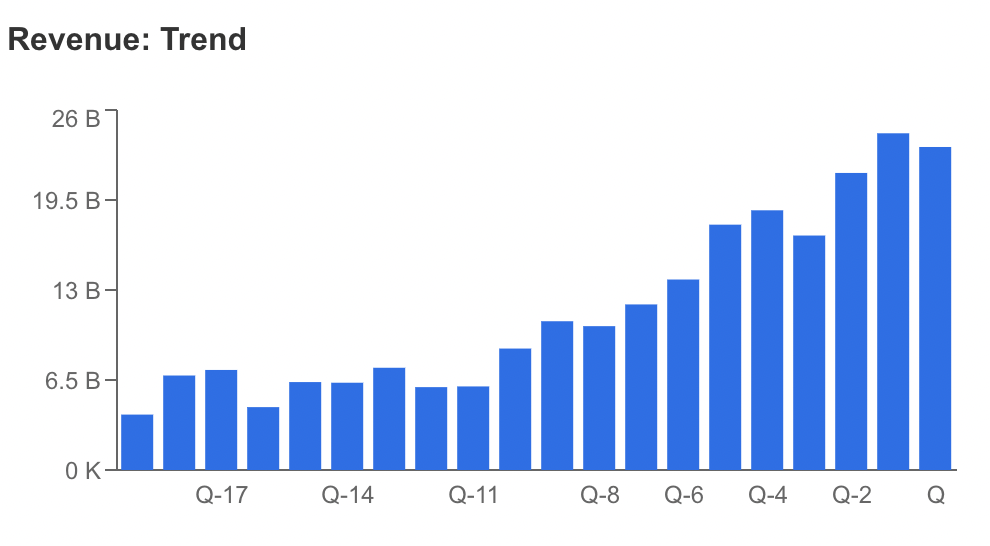
Source: InvestingPro
However, the company’s gross margin under generally accepted accounting principles (GAAP) declined by almost ten percentage points from Q1 2022, and its free cash flow fell by 80% year over year. Along with that, the company's EBITDA margin has also bounced back after peaking recently.
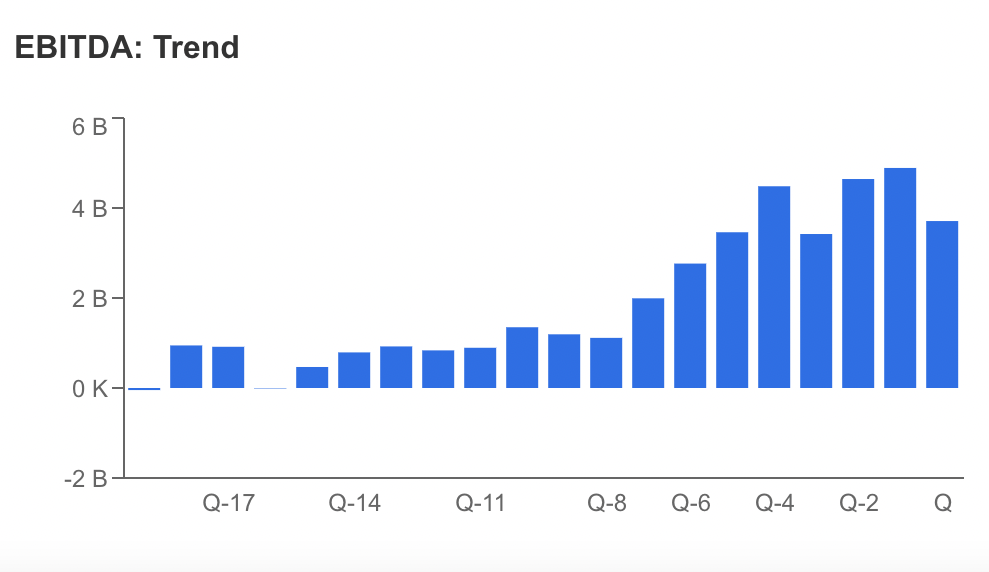
Source: InvestingPro
That’s mainly driven by a few simultaneous factors, such as:
- The rising cost of revenues:
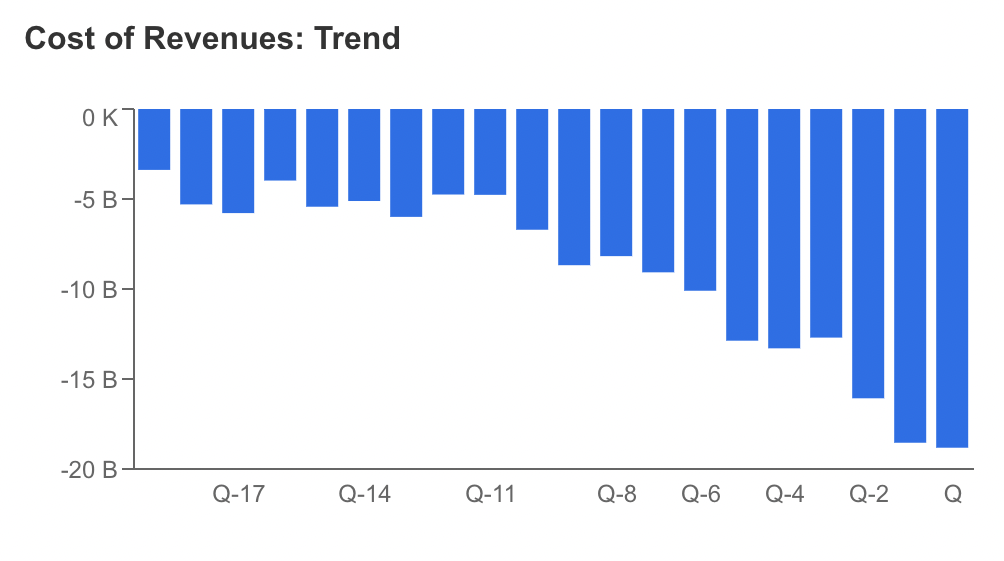
Source: InvestingPro
- Stubbornly high cost of labor:
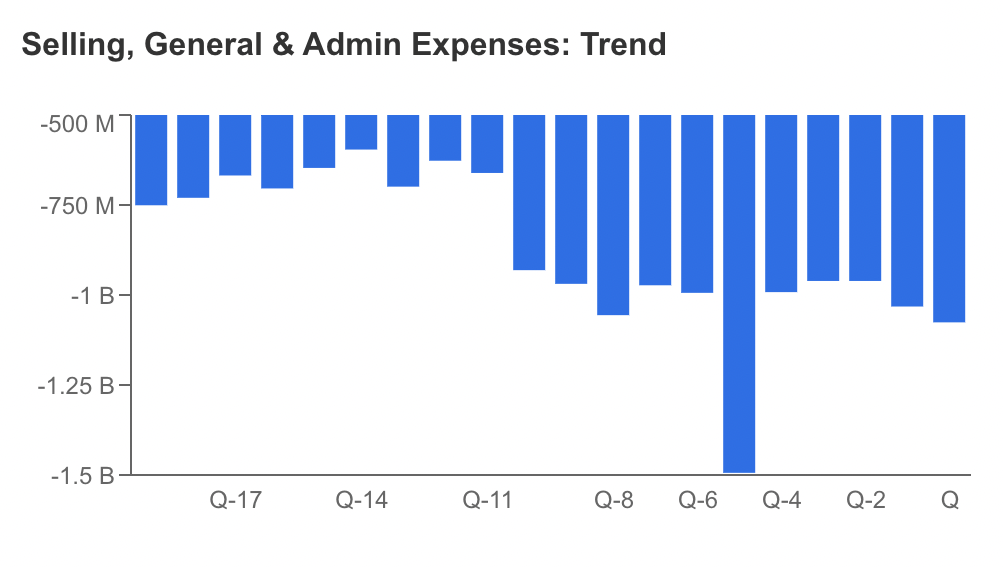
Source: InvestingPro
- And increasing net interest expenses:
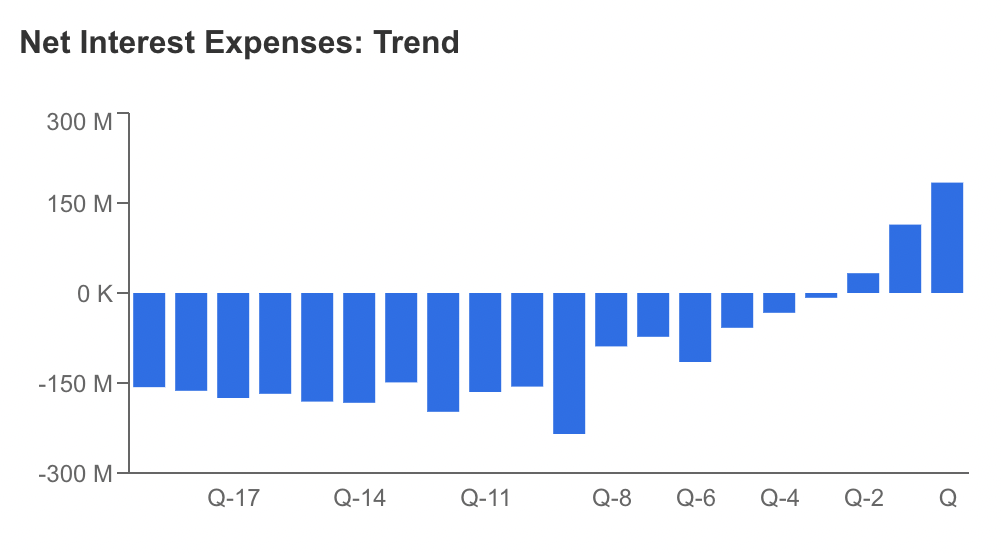
Source: InvestingPro
Going into Q2 earnings, Wall Street banks have responded to these figures by reducing their target prices for Tesla. As a consequence, the stock has had 20 negative EPS revisions over the last 90 days and only two positive.
On the positive side, however, within Tesla’s Q1 investor deck, the company noted that despite price reductions in its vehicles, it is focused on operating leverage as it scales and expects ongoing cost reduction.
This strategy is not new and has been used by companies like Domino’s Pizza in the 1970s and Apple (NASDAQ:AAPL) in the early days of the iPhone. These companies aimed to compensate for lower unit sales with higher volumes. However, unlike Domino’s or Apple customers, who can become repeat patrons, Tesla consumers typically don’t buy new cars as frequently.
Investors should be aware that Tesla’s margins may continue to contract in the short term. Such contractions could limit Tesla’s ability to invest in new products and services.
Therefore, understanding how the decline in cash flow is affecting the company’s long-term growth will be crucial in upcoming quarters.
Technicals and Price Target
According to InvestingPro, Tesla has all the right attributes to keep growing in the near future except for its price momentum. That's why analysts predict a 10% downside from current levels.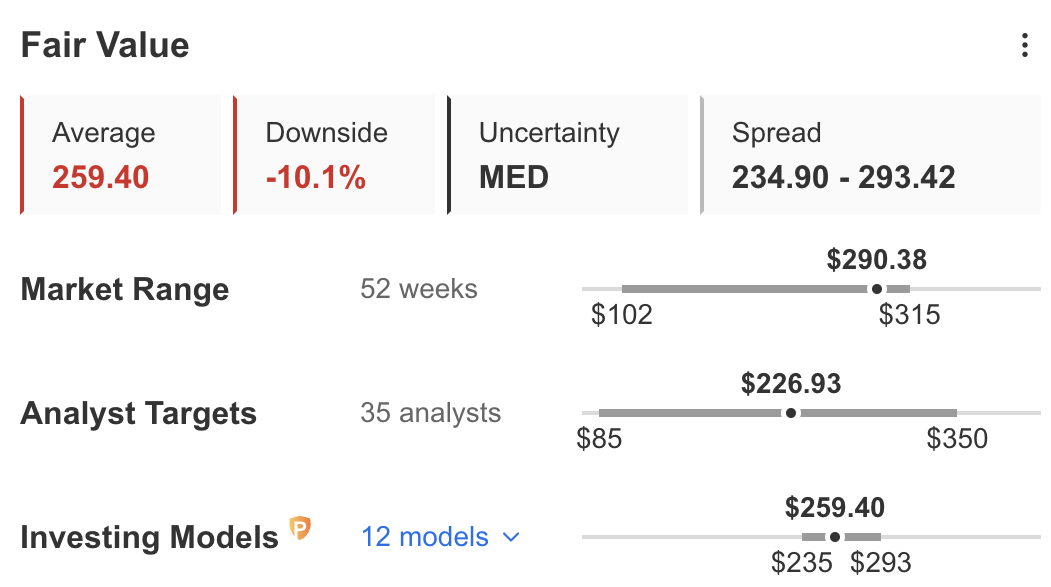
Source: InvestingPro
That same issue shows up in the stock's Financial Health score. While all the indicators point to a positive outlook for the company, the relative value has the lowest possible score of 1. 
Source: InvestingPro
From a technical standpoint, Tesla's 14-day RSI is at a very high 73.80, implying that the stock is deep in overbought territory. 
Source: InvestingPro
Bottom Line
While it is likely that Tesla’s earnings tomorrow won’t look so positive from a quarter-on-quarter perspective, the details could tell a very different long-term story for the stock. In that sense, investors should maintain their vision wide when making any moves based on the earnings report.
There’s no argument that Tesla is a highly overvalued stock. However, it is poised to maintain the positive long-term momentum for as long as it keeps showing improving efficiency. Betting against Elon Musk when financial conditions are improving has proved a very dangerous game once and should continue to be in the foreseeable future.
A move toward the lower $200 could signal a buying opportunity for those willing to ride the roller coaster.
***
Disclosure: The author does not own Tesla stock.

